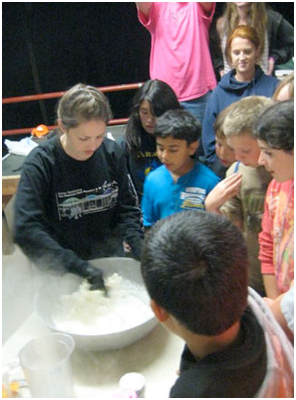4-H Delivers
Las Posadas Summer Camp
The Issue: There is a need for improved science education in California. With 4-H’s focus on engaging youth in fun and exciting hands-on science education, Alameda County’s 4-H camp integrated science activities into its summer camp program. In August 2010, a science curriculum was developed that included aerodynamics, weather, properties of matter, physics, and materials chemistry. The challenge was to effectively teach scientific principles in a fun, hands-on manner consistent with the summer camp atmosphere. Youth were encouraged to reason through scientific problems and apply critical thinking skills to offer a solution.
What has 4-H done?: Lessons were taught in the fundamental physics of flight, weather patterns, and changes in elevation. Campers were taught the basic principles of air and how the chemistry of air relates to air pressure. Youth learned how to demonstrate Bernoulli’s Principle by using “wind bags” and “solar bags” and then were able to apply the principle to the aerodynamics of airplanes and the trajectory of curve balls. Campers also learned about the basic concepts of screen printing, including the history of the technique and the chemistry involved in the exposure of modern photo-sensitive emulsions to create a screen. Youth were able to design their own screen print design, expose their own design and print their own shirt. By participating in this activity, youth were able to fully grasp the concepts of photo-exposure which is often difficult to explain through diagrams or words alone. A Magic Science Show exhibited experiments including “burning” a dollar bill, decomposing hydrogen peroxide using a catalyst, and a pseudo-fireworks show demonstrating the composition of atoms and electronic transitions and chemical reactions. The newest experiment demonstrated was “Liquid Nitrogen Ice Cream.” This became one of the most popular activities of the week!
The Impact: Youth received approximately four hours of science instruction in addition to brainstorming sessions and independent study. Emphasis was placed on hands-on learning and inspiring youth to continue to explore the scientific world. The sessions were successful because the youth learned the principles of physics and chemistry as well as critical thinking and reasoning while having fun and exploring the scientific world, with the added bonus of making and eating ice cream.




